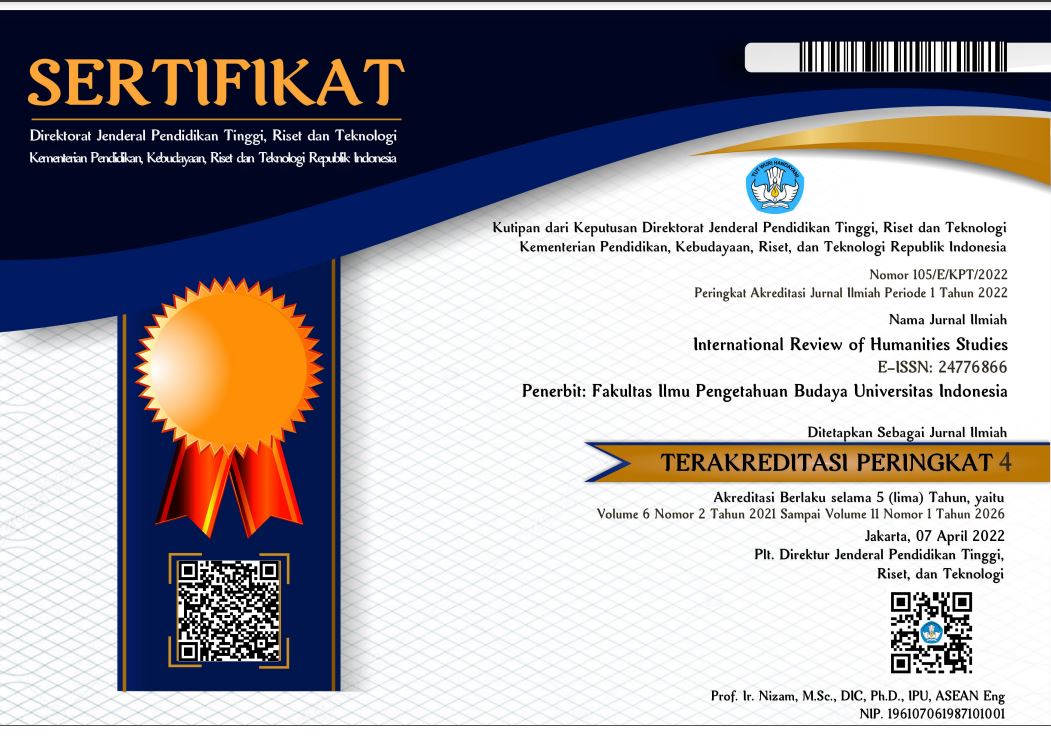International Review of Humanities Studies

Abstract
This paper analyzes the linguistic landscape on the guide signs in the public spaces of Expo 2020 Dubai, United Arab Emirates, attended by 192 countries worldwide from October 1, 2021, to March 31, 2022. Dubai, UAE's position as the organizer of Expo 2020 Dubai influences language policy in creating a linguistic landscape situation in a location filled with visitors from various national, linguistic, and cultural backgrounds. This study aims to find out how and what is the background of LL in terms of language in the instructions in public spaces at Expo 2020 Dubai using qualitative methods. The researcher uses Landry and Bourhis's (1997) Linguistic Landscape theory. The results of this study indicate that the LL at Expo 2020 Dubai is filled with Arabic and English, which have informational and symbolic functions. The UAE uses Arabic to show its national identity to the international sphere at Expo 2020 Dubai, which communicates in English. This article can be helpful as a new reference or library for readers to increase their knowledge of linguistic landscape studies in Arab countries, especially Dubai, United Arab Emirates.
References
Articles and Journals Berg, B. L., & Lune, H. (2012). Qualitative research methods for the social sciences. Boston: Pearson. Cenoz, Jasone & Gorter, Durk. (2006). Linguistic Landscape and Minority Languages. International Journal of Multilingualism. 3. 67-80. 10.1080/14790710608668386. Crystal, D. (2003). English as a Global Language. 10.1017/CBO9780511486999.
Datang, F. A., Munawarah, S., Triwinarti, W., & Lauder, M. R. M. T. (2022). Signage in public spaces: Impact of tourism on the Linguistic Landscape of Labuan Bajo. International Review of Humanities Studies, 7(1). https://doi.org/10.7454/irhs.v7i1.394
Dorsey, C. (2018). The Role of English in the United Arab Emirates and Resulting Implications for English Teaching. 10.13140/RG.2.2.14096.30724.
Erikha, F. (2018). Konsep Lanskap Linguistik Pada Papan Nama Jalan Kerajaan (Râjamârga): Studi Kasus di Kota Yogyakarta. Paradigma, Jurnal Kajian Budaya. https://doi.org/10.17510/paradigma.v8i1.231
Gorter, D. (2006). Further Possibilities for Linguistic Landscape Research. Clevedon: In Durk Gorter (Eds). Linguistic Landscape: A New Approach to Multilingualism. pp. 81–89. Clevedon: Multi-Lingual
Matters Ltd. Landry, R. & Bourhis, R. (1997). Linguistic Landscape and Ethnolinguistic VitalityAn Empirical Study. Journal of Language and Social Psychology - J LANG SOC PSYCHOL. 16. 23–49. 10.1177/0261927X970161002.
Nash, J. (2016). “Is Linguistic Landscape Necessary?”. In Landscape Research Journal, Vol. 41(3). 380–384. London: Routledge.
Nelde, P.H. (2017). Language Conflict. In The Handbook of Sociolinguistics, F. Coulmas (Ed.). https://doi.org/10.1002/9781405166256.ch17
Puzey, G. (2016). Linguistic Landscapes in The Oxford Handbook of Name and Naming. Oxford University Press.
Rafael, E., Shohamy, E., Amara, M. & Hecht, N. (2006). Linguistic Landscape as Symbolic Construction of the Public Space: The Case of Israel in D. Gorter (Ed.), Linguistic Landscape: A New Approach to Multilingualism (pp. 7-30). Bristol, Blue Ridge Summit: Multilingual Matters. https://doi.org/10.21832/9781853599170-002
Randall, M., & Samimi, M. (2010). The status of English in Dubai. English Today, 26(1), 43-50. doi:10.1017/S0266078409990617
Siemund, Peter & Leimgruber, Jakob. (2021). Multilingual Global Cities: Singapore, Hong Kong, Dubai. 10.4324/9780429463860.
Internet Expo 2020 Dubai. (2021). Understanding Expo. Accessed on 5 May 2022 on the website www.expo2020dubai.com United Arab Emirates. اإلمارات دولة عن) About the UAE). Accessed on 6 May 2022 on the page https://u.ae/ar-AE/about-the-uae Federal Competitiveness and Statistics Center UAE. UAE Statistics. Accessed on 6 May 2022 on the page fcsc.gov.ae
Recommended Citation
Fadhillah, Afifah and Triwinarti, Wiwin
(2023)
"LINGUISTIC LANDSCAPE ON GUIDE SIGNS IN PUBLIC SPACES OF EXPO 2020 DUBAI, UNITED ARAB EMIRATES,"
International Review of Humanities Studies: Vol. 8:
No.
2, Article 4.
DOI: 10.7454/irhs.v8i2.1110
Available at:
https://scholarhub.ui.ac.id/irhs/vol8/iss2/4


